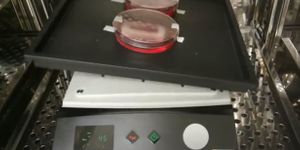Atomic Method For Detecting Art Forgery
The detection of forged artworks relies heavily on chemistry techniques because many fakes seem so realistic that they are almost indistinguishable from the real works on the surface.
One of the methods is to look at the radioactive remnants from atomic bomb explosions. Nuclear explosions produce radioactive substances that are naturally rare such as carbon-14 (C-14), a radioactive form of carbon atoms. By measuring a sample from any paintings completed after 1945, when the first nuclear bomb was deployed during world war II, scientists would notice the unusually high amount of C-14 as compared to those completed before 1945. Base on the C-14 time stamp, it is easier for one to tell if the painting is a fake or not.
But what if both the original and counterfeit paintings were created before the nuclear era? Scientists would rely on another technique called carbon dating. Carbon dating is the gold standard for determining the age of an object containing organic material by using the properties of radiocarbon, in this case again C-14.
In Earth's upper atmosphere cosmic ray bombards the nuclei of nitrogen molecules constantly, producing C-14 at a specific rate. The radioactive carbon forms carbon dioxide through reaction with oxygen and then gets incorporated into the cycle of lives on Earth. By measuring the C-14 radiation (which is converted the amount of C-14 atoms) from any artifacts that contains organic materials, and comparing the amount of non-radioactive carbon atoms in the same sample, scientists can generate a ratio that is specific to the time when the source life forms existed. Since canvas and wooden frames are made from organic materials, paintings from older eras can be sampled and tested for carbon ratio and thus the time of their origin. The discrepancy in timeline provides valuable information to distinguish forged paintings from the authentic masterpieces.
Source: It's Okay To Be Smart via Youtube








